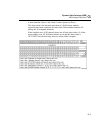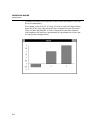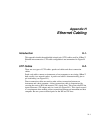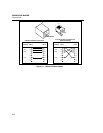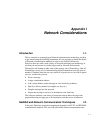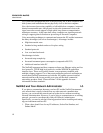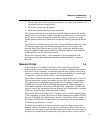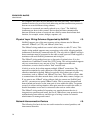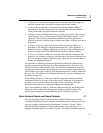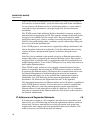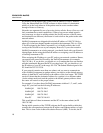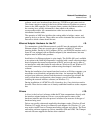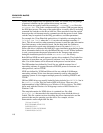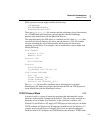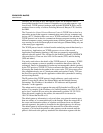
Network Considerations
Network Primer
I
I-5
• A Repeater is a device used to physically isolate and extend the length of a
network segment, but it does not divide the network into subnets.
• A hub is a device that allows communication among multiple 10BaseT
network hosts and allows these hosts to communicate with other Ethernet
wiring. Some hubs also perform Router functions.
• A Bridge is used on Ethernet networks to isolate two portions of the network
at the Frame level (see “Basic Network Packet and Frame Contents” in this
appendix). This is done to minimize transmission collisions, but the two
portions isolated by a Bridge remain on the same subnet. A Bridge also acts as
a Repeater.
• A Router is used to isolate two portions of the network into subnets, as
described in “IP Addresses and Segmented Networks” in this appendix. A
Router also acts as a Bridge. Make sure your Router will route IP packets if
you want to place the PC and NetDAQ instruments in different subnets.
• A Gateway is used to connect two networks with different architecture and
protocols. For example, a Gateway could be used to connect an Ethernet to an
X.25 net running on public telephone wiring. Gateways also perform Router,
Bridge, and Repeater functions.
The operation of NetDAQ software and instruments should be unaffected by a
properly designed network using any of these network devices. However, you
must use extra care when setting up PCs and NetDAQ instruments in a network
containing multiple subnets (net containing one or more routers and/or gateways).
The IP addresses assigned to the PC and instruments must be carefully selected in
this case. See “IP Addresses and Segmented Networks” for more information on
IP address assignment.
When a Bridge, Router, or Gateway is used in a network containing NetDAQ
instruments and hosts, be sure to reboot the host PC whenever an instrument is
moved from one section of the net to another. This is required to allow the
network hardware devices to initialize bridging and routing tables.
Also, when NetDAQ is used in a different subnet from the PC, the Routers and
Gateways used to connect the subnets must be able to route IP packets. The
default gateway addresses on the NetDAQ and PC must be set properly.
Basic Network Packet and Frame Contents I-7.
Network messages consist of short (mostly less than 1K byte) hunks of data,
surrounded by header and error detection information used by the protocols. The
message, together with the protocol information, is called a "Packet." When
physical network information (clock synchronization, error detection, etc.) is
wrapped around the packet, it is called a "Frame." The interface hardware adds and



